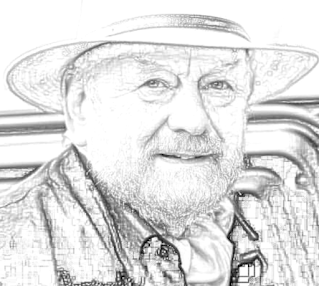The "angry Muslim": a history of misrecognition
 Danish artist Kurt Westergaard died at the age of 86 on 14 July 2021. The illustrator was the creator of one of the twelve drawings published by Denmark's largest daily conservative newspaper Jyllands-Posten on 30 September 2005, in an article entitled Muhammeds ansigt (The face of Muhammad).
Danish artist Kurt Westergaard died at the age of 86 on 14 July 2021. The illustrator was the creator of one of the twelve drawings published by Denmark's largest daily conservative newspaper Jyllands-Posten on 30 September 2005, in an article entitled Muhammeds ansigt (The face of Muhammad).
Flemming Rose, the culture editor of the daily had written about the project commissioned by him and which Kurt Westergaard was part of:
Modern, secular society is rejected by some Muslims. They demand a special position, insisting on special consideration of their own religious feelings. It is incompatible with contemporary democracy and freedom of speech, where one must be ready to put up with insults, mockery and ridicule. It is certainly not always attractive and nice to look at, and it does not mean that religious feelings should be made fun of at any price, but that is of minor importance in the present context. ... we are on our way to a slippery slope where no-one can tell how the self-censorship will end. That is why Morgenavisen Jyllands-Posten has invited members of the Danish editorial cartoonists union to draw Muhammad as they see him.
Rose, addressing Danish Muslims, construed the project as an inclusive endeavour:
We are integrating you into the Danish tradition of satire because you are part of our society, not strangers. The cartoons are including, rather than excluding, Muslims.
The publication of the cartoons was also accompanied by an editorial titled "Truslen fra mørket" ('The Threat from the Darkness') accusing Muslim leaders of feeling "entitled to interpret the prophet's word, and cannot abide the insult that comes from being the object of intelligent satire."
In their obituaries of Westergaard, Danish and international media focused more on the so-called Muhammad cartoons controversy than on the rest of the illustrator's life and represented his Jyllands-Posten Muhammad cartoon and the broader Muhammeds ansigt initiative as the spark of a fifteen-year-long history of Muslim anger at the public depiction of the prophet that often turned violent and even murderous. This is not so much a note about Westergaard but about the narratives revolving around the notion of the angry Muslim that has been reproduced by the media on the occasion of his death.
 |
| Kurt Westergaard - Muh |


